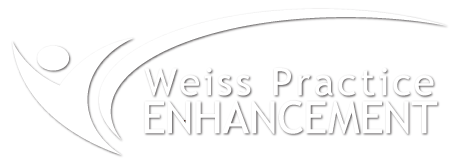In my last article, How to Use the Job Description in the Hiring Process, I noted that great job descriptions orientate and evaluate new and veteran team members. When used effectively, job descriptions:
- Share your vision for each job role
- Describe your expectations of employee behavior
- Lay the foundation for performance evaluations
Alas, too many dentists haven’t updated their job descriptions since the 1990’s and they are often irrelevant artifacts growing dusty in personnel files. So how can you revitalize job descriptions to become an essential communication tool for new and veteran employees?
Let’s examine dark side for one moment. Here is how NOT to use a job description.
Job descriptions should not:
- Be rolled up like a newspaper and bashed over the head of an under-performing employee.
- Contain an infinite list of tasks that only superman could accomplish.
- Be shoved in front of employees on their first day, with a demand to read it and then never discussed again.
Job descriptions should be:
- Shared during job interviews to gauge the candidate’s skills.
- Co-edited with veteran team members to accurately reflect their job duties and to highlight skills that need to be developed or improved.
- Discussed during annual performance evaluations and salary reviews.
- Reviewed when bringing on new staff to determine if there are overlaps or gaps in job duties.
Components of the Job Description:
A robust job description contains the following four sections:
- The Vision describes the overall purpose of the position, highlighting how this person contributes to the practice.
- Measurement of Success describes the quantitative and qualitative key performance indicators associated with the role. This section answers the question: How will we objectively know you’re doing a good job?
- Job Responsibilities are divided into three categories to represent three sets of competencies. These are:
- Job specific responsibilities
- Teamwork expectations
- Practice Building expectations
- Leadership/Self-Direction describes how employees are expected to initiate improvements, develop their skills and help their colleagues.
Using The Vision to Enhance Feedback
The vision section highlights why this position is vital to the practice. Here is the vision in a hygienist’s job description.
The hygienist is the mastermind of the office’s continuing care program. S/he partners with the dentist to develop and implement a hygiene program that helps our patients understand and become proficient at practicing preventive dentistry. The hygienist serves as the “co-pilot” in navigating a patient’s plan for long term, complete care. Each patient should learn something new at each continuing care appointment. The goal is to work synergistically with the dentist and the team to make sure that every patient receives the best hygiene, restorative and cosmetic care possible.
Now imagine you need to have a conversation with an under-performing hygienist. Without this sort of vision you’d say,
“Esmeralda you’re not getting all the calculus with patients and their visits seem rushed. You need to take more time.” Is this direct? Yes. It is inspirational? No. You may get compliance but you will not get commitment.
Now reimagine that conversation when you refer to the vision of their job description.
“Esmeralda, you have a vital role in our office. As described in your job description, you are the mastermind of our hygiene program and you serve as the co-pilot for our patients’ care. When the hygiene appointments are rushed and patient’s calculus is not completely removed, we fail in our mission to keep patients healthy. What can you commit to doing differently so that we fulfill our vision?”
This verbiage justifies the need for a performance change because the current behavior undercuts the vision. Notice that for a second. The dentist isn’t saying, “I’m really frustrated/disappointed in you.” The issue isn’t about upsetting you, like you’re a disapproving parent. The real issue is that the hygienist is undermining the practice’s philosophy of care and that is non-negotiable. You are transported from having discussions where you plead, “Do it, because I say so,” to more adult conversations where can say, “This is our philosophy and we need to respect and abide by that.”
Using the Job Description for Employee Self-Evaluation
Many dentists say they want self-directed team members, but then they don’t create the conditions where employees practice skills related to self-direction. Using the vision to justify the need for a performance change is one way to get employees to self-correct. Additionally, you can use the job descriptions in lieu of or in preparation for performance appraisals.
Team members can use the job description as a worksheet to evaluate their own skills, commitment and attitudes. You can ask them to rate themselves on a five-point Likert scale or a simpler format but the upshot should be they indicate the following:
- I believe I am meeting or exceeding the expectations for this task
- I believe I am not meeting the expectations
By evaluating themselves against the standards listed in the job description, your employees learn to be more self-aware and self-directed. Instead of you telling them where they need to improve, they tell you. And in cases where you disagree with an employee’s self-assessment, you can have a dynamic conversation about standards and expectations instead of a blameful conversation about disappointment and frustration.
Let me know if you would like to create or edit job descriptions in your practice. I have a job description for every role – including yours, in case you wonder what you’re supposed to be doing all day!




